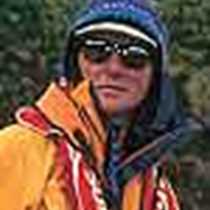Port-of-Spain, Trinidad
Bottlenose dolphins frolicked around the ship throughout the early morning hours as we continued eastward along the coast of Venezuela. Mike Greenfelder gave a colorful and informative talk on coral reefs followed by Brent Houston, who told us the story of the National Geographic/Lindblad Expeditions meeting and the development of the itineraries for the upcoming 2006 South Pacific season. With this information in hand, many guests decided to “seal the deal” onboard by booking upcoming voyages.
Bocas del Dragon led us to the Gulf of Paria, and soon we were alongside in Port-of-Spain Trinidad. A speedy clearance ensued and after a welcome by the local guides shore side, we were off and away, headed for the famous Caroni Swamp.
A true wonder of the natural world, the Caroni swamp is just outside of the city, yet is 40 square miles and is home to many species of fish, cayman, snakes, waders, herons and egrets, yet the most sought after bird of the day had to have been the scarlet ibis. Thousands of these brilliantly red-colored birds nest and roost here, and as we made our way further and further into the swamp we could see the flocks overhead returning to the roosting mangrove trees. From a respectful distance we watched as fluorescent birds circled and landed in and among egrets and herons alike.
In the evening, we visited a beach where female leatherback turtles come ashore to nest. I don't think any of us were ready for the power of this experience. The photo today shows a larger female (they can reach 10 feet long) as she digs out the nesting chamber with her two hind flippers. She does this by alternating flippers, and skillfully yet carefully scooping out a chamber before depositing up to 100 ping pong ball-sized eggs. She will return periodically to do this several times before leaving the area and traveling around the Atlantic, even reaching Nova Scotia, Western Europe and Northern Africa.
That sounds like a long way to travel, but it is, in the end, always worth the effort; wonderful and magical. The same holds true for us aboard the National Geographic Endeavour.
Bottlenose dolphins frolicked around the ship throughout the early morning hours as we continued eastward along the coast of Venezuela. Mike Greenfelder gave a colorful and informative talk on coral reefs followed by Brent Houston, who told us the story of the National Geographic/Lindblad Expeditions meeting and the development of the itineraries for the upcoming 2006 South Pacific season. With this information in hand, many guests decided to “seal the deal” onboard by booking upcoming voyages.
Bocas del Dragon led us to the Gulf of Paria, and soon we were alongside in Port-of-Spain Trinidad. A speedy clearance ensued and after a welcome by the local guides shore side, we were off and away, headed for the famous Caroni Swamp.
A true wonder of the natural world, the Caroni swamp is just outside of the city, yet is 40 square miles and is home to many species of fish, cayman, snakes, waders, herons and egrets, yet the most sought after bird of the day had to have been the scarlet ibis. Thousands of these brilliantly red-colored birds nest and roost here, and as we made our way further and further into the swamp we could see the flocks overhead returning to the roosting mangrove trees. From a respectful distance we watched as fluorescent birds circled and landed in and among egrets and herons alike.
In the evening, we visited a beach where female leatherback turtles come ashore to nest. I don't think any of us were ready for the power of this experience. The photo today shows a larger female (they can reach 10 feet long) as she digs out the nesting chamber with her two hind flippers. She does this by alternating flippers, and skillfully yet carefully scooping out a chamber before depositing up to 100 ping pong ball-sized eggs. She will return periodically to do this several times before leaving the area and traveling around the Atlantic, even reaching Nova Scotia, Western Europe and Northern Africa.
That sounds like a long way to travel, but it is, in the end, always worth the effort; wonderful and magical. The same holds true for us aboard the National Geographic Endeavour.




